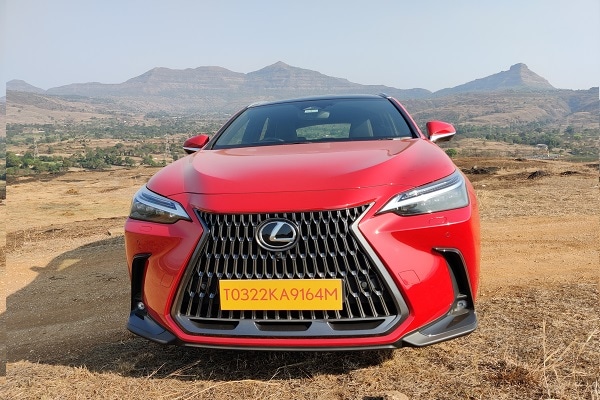China Lithium giant faces debt mountain after deal at cycle top


After borrowing billions to fund an overseas expansion to ride a lithium boom, a collapse in prices has left one of the world’s top producers straining under a mountain of debt.
Valued at more than $6 billion, Tianqi Lithium Corp.’s predicament highlights the risks of boom-and-bust cycles in commodity markets that can punish mistimed or over-extended ventures, even in sectors fated to become dominant.
Also check these Vehicles
While long-term prospects for lithium are bullish as demand for electric-vehicle batteries booms, the sector is reeling from a prolonged price slump triggered by an explosion in supply and reduction of EV subsidies in China, the biggest auto market.
Tianqi is staring down a $3.5 billion loan from China CITIC Bank that it used to buy a 24% stake in a Chilean rival in May 2018. About $2.3 billion of that is scheduled to come due in November, Moody’s Investors Service said in a report last month.
The company’s $300 million offshore bonds sank the most on record last week amid reports that the giant miner was facing uncertainty over the repayment of just 300 million yuan ($43 million) of debt. They’ve since been drifting about 66 cents on the dollar, near an all-time low, amid continued concern about its financial health.
It’s not just Tianqi feeling the pain. Top global producer Albemarle Corp. has halted plans to spend $1.5 billion on new capacity, while Livent Corp. is also reviewing its growth ambitions. In Australia, juniors Galaxy Resources Ltd. and Pilbara Minerals Ltd. have slashed production plans, blaming low prices and excess supply. And in Canada, aspiring producer Nemaska Lithium entered creditor protection last month after a strategic review.
All of this is a response to a premature wave of new supply that flooded the market in the past two years, overwhelming even the growth in demand for the material used in rechargeable batteries. Prices have halved since their peak in May 2018, according to consultant Benchmark Mineral Intelligence.
Tianqi’s business has been “dragged by very heavy refinancing needs," said Clare Guo, credit desk analyst at Nomura International HK Ltd. Still, it has world-class resources and manages to maintain decent operations in spite of tumbling lithium prices, she said.
The company said in a filing to the Shenzhen stock exchange Jan. 23 that it has transferred funds for a payment on the 300 million yuan onshore bond, puttable Feb. 1. It didn’t respond to calls and emails seeking comment before and during the Lunar New Year holiday in China, which has been extended because of the coronavirus outbreak.
In early 2018, with prices soaring to multi-year highs amid a frenzy of interest in lithium assets, Tianqi clinched its deal to buy 24% of in Sociedad Quimica y Minera de Chile -- known as SQM -- for more than $4 billion. The tumble in prices since the acquisition has left Tianqi with a pile of debt and steadily shrinking profit.
In April 2019, the company said its focus for the year was to reduce its asset-to-liability ratio to a “more reasonable level," and highlighted that its gross margins and cash flows were healthy. While gross profit margins for the third quarter last year were 53%, it posted its first quarterly net loss in more than 5 years as debt repayments mounted. Net interest servicing climbed to 552 million yuan.
The company in December raised about 2.93 billion yuan in a rights issue, less half the 7 billion yuan it was seeking to help pay down the load for the SQM purchase.
About 41% of those new shares were purchased by Tianqi Group, the main shareholder and controlled by founder Jiang Weiping, along with related parties including Jiang’s wife, Zhang Jing, and son-in-law, according to a company filing.
Moody’s last month cut Tianqi’s rating to B1 from Ba3, saying smaller-than-expected proceeds from the rights issue would result in slower de-leveraging and tighter liquidity. Total debt will remain about 7.5 times operating profit for the next 12 months, Moody’s estimated.
“The negative ratings outlook continues to reflect the uncertainty related to Tianqi Lithium’s refinancing plans, weak liquidity position and weak operations," Gerwin Ho, Moody’s lead analyst for Tianqi, wrote in a Dec. 23 note. Nevertheless, Moody’s said it expected the company will be able to roll over its debt with banks “given its strong market position."
Tianqi would be far from the first commodities company to splurge on assets at the top of a cycle, only to face a squeeze when prices collapse. A famous example was Rio Tinto Group’s debt-fueled purchase of Alcan Inc. in 2007, just before the global financial crisis sparked a decade of woes for the aluminum industry.
“A surplus of lithium product production, increasing inventory levels and weaker than anticipated demand" from the electric vehicle sector in China and the U.S. pressured suppliers of the metal through the second half of 2019, according to Galaxy Resources Ltd., which said Jan. 23 it would cut its mining operations and production in Western Australia. The market will continue to be pressured by excess stockpiles throughout the early part of 2020, it said.
There’s a potential better long-term outlook as many planned projects have stalled on a lack of funding, meaning the market may return to a deficit as demand builds from automakers by the middle of the decade, according to Galaxy.
The SQM stake purchase was “based on strategic needs," Tianqi said in a statement in June 2018. The investment will bring long-term stable returns and enhance Tianqi’s exposure to SQM’s world-class resources, it said. Headquartered in Chengdu, Sichuan Province, Tianqi also owns a 51% stake in the Greenbushes lithium mine in Western Australia.
The lithium market is paying close attention to Tianqi because it took on so much debt to pursue the purchase when prices were very high, according to Daniel Chen, an analyst at consultancy CRU Group.
“I think Tianqi thought the SQM transaction as a once-in-a-lifetime opportunity," he said. “And if they don’t take the chance then it would never happen."








 40 kWh
40 kWh 150 Km
150 Km
 3996.0 cc
3996.0 cc Petrol
Petrol














